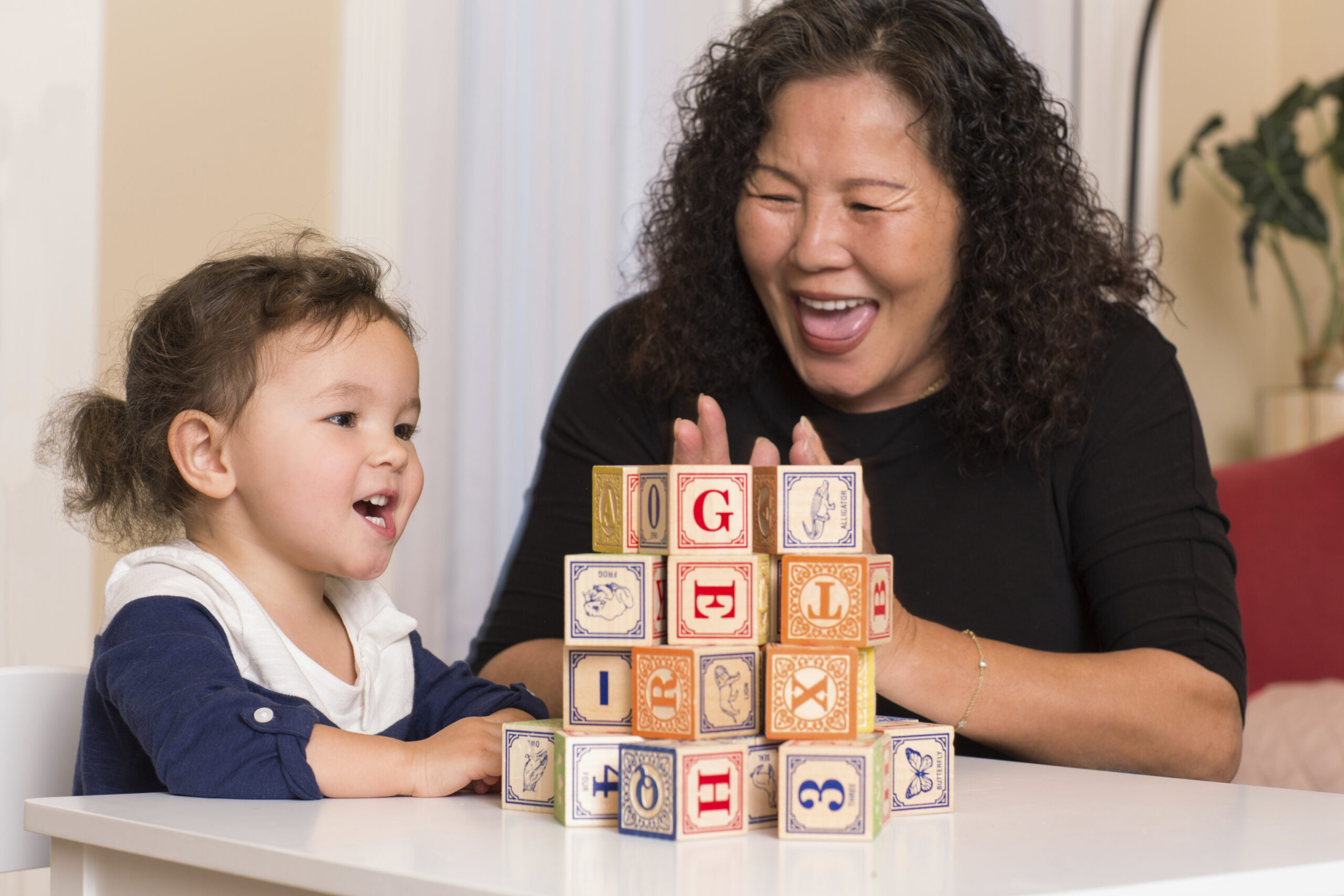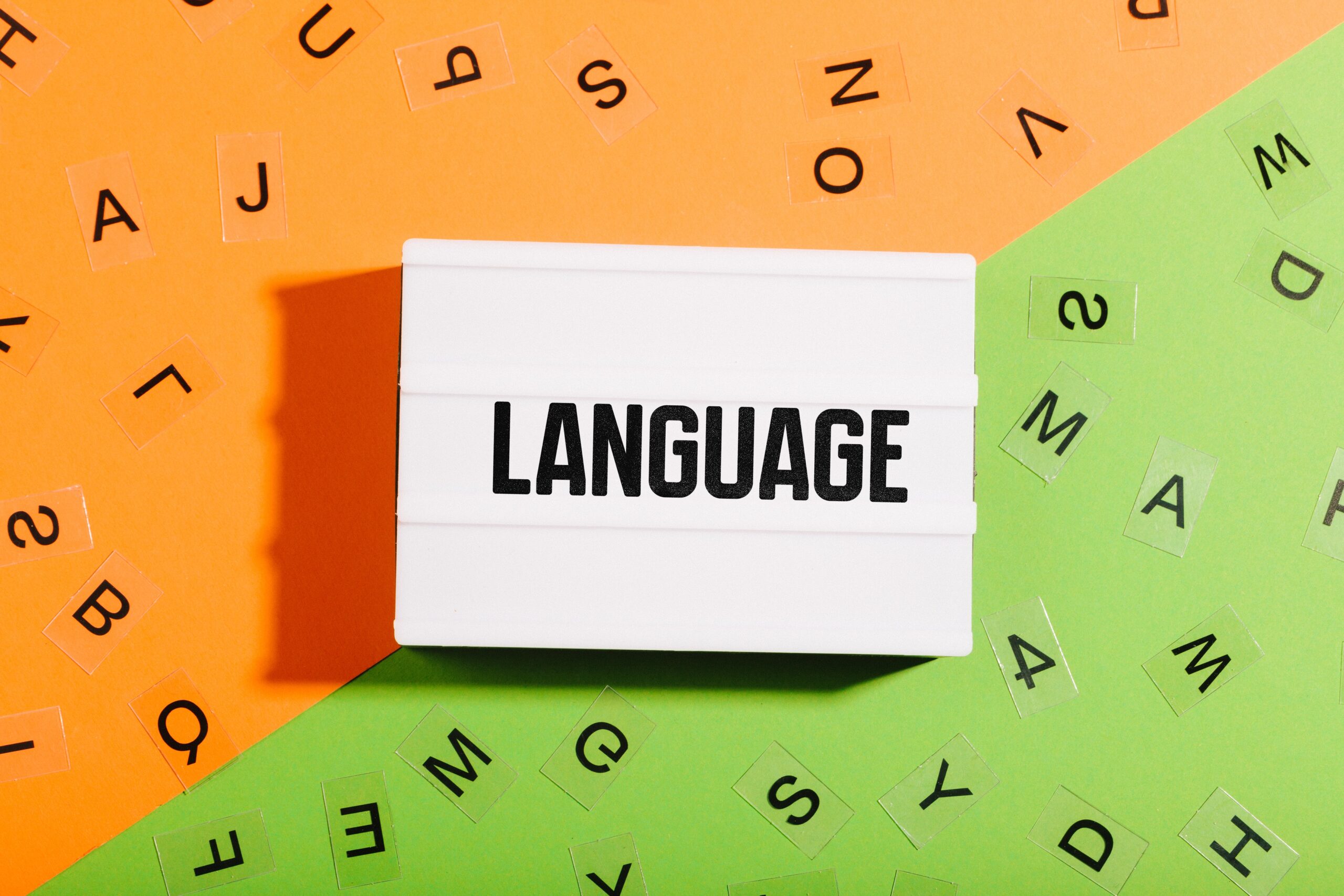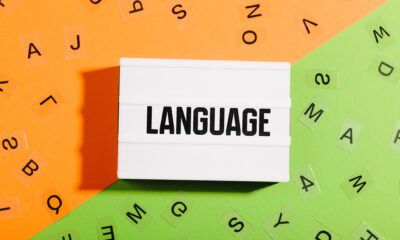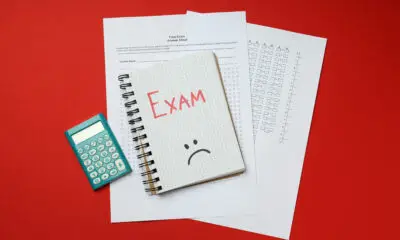Phonics
The Best Age to Start Phonics Instruction: A Guide for Parents

One of the most common questions parents ask when it comes to early literacy is:
“When should my child start learning phonics?”
It’s a smart question—because while phonics is one of the most effective ways to teach reading, starting at the right time can make a big difference in how well children absorb and apply these skills. Begin too soon, and children may feel overwhelmed or frustrated. Wait too long, and they may struggle to catch up with peers.
At TutorConnectPro, we know that early reading success is about finding the right balance between readiness and challenge. In this guide, we explore the ideal age to begin phonics instruction, how to recognize reading readiness, and what parents can do to support phonics learning at home.
Why Phonics Matters for Early Literacy
Phonics instruction teaches children how letters (graphemes) correspond to sounds (phonemes), giving them the tools to decode words accurately and confidently. Rather than guessing at words or relying on memorization, children who learn phonics can break words apart, sound them out, and read them independently.
Strong phonics skills support:
- Reading fluency (smooth, automatic reading).
- Spelling accuracy (understanding sound-letter relationships).
- Reading comprehension (focusing on meaning instead of decoding struggles).
- Writing development (spelling and vocabulary growth).
Because phonics directly teaches the “code” of written language, it builds the essential foundation for reading success.
When Do Children Typically Start Phonics?
Most children begin formal phonics instruction between ages 4 and 6, which generally corresponds to the preschool, kindergarten, and early first-grade years. However, the best age is not determined by a specific birthday—it’s about developmental readiness.
Key milestones that suggest phonics readiness include:
- Understanding that spoken words are made up of individual sounds.
- Recognizing some letters and their associated sounds.
- Showing interest in books, letters, or writing.
- Demonstrating the ability to focus on tasks for short periods.
These skills are often referred to as phonemic awareness—the ability to hear, identify, and manipulate sounds in spoken language. Phonemic awareness is the critical first step that prepares children for formal phonics instruction.
Why Age Alone Isn’t the Only Factor
While ages 4–6 are common starting points, every child develops at their own pace. Some children may be ready for phonics earlier, while others need more time to build pre-reading skills before diving into structured instruction.
What’s most important is readiness, not rushing. Starting phonics before a child has the attention span or phonemic awareness to engage with it productively can lead to frustration rather than success.
A child’s interest in reading, exposure to books, and opportunities for play-based literacy activities can all influence when they’re ready to begin phonics instruction.
Phonics Learning Stages by Age
Here’s a general breakdown of how phonics instruction might look at different ages and stages:
Ages 3–4: Phonemic Awareness Foundations
- Singing songs, rhymes, and chants.
- Playing with sounds through word games.
- Beginning to recognize letters (especially in their own name).
- Understanding that print carries meaning.
Ages 4–5: Introduction to Letter-Sound Correspondence
- Learning single letter sounds (consonants and short vowels).
- Starting to blend sounds to form simple CVC words (e.g., cat, dog).
- Recognizing and writing letters.
- Building phonemic awareness through rhyming and syllable clapping.
Ages 5–6: Formal Phonics Instruction
- Mastering blending and segmenting skills.
- Learning digraphs (sh, ch, th) and consonant blends (bl, st, gr).
- Understanding long vowel sounds and vowel pairs (ai, ee, oa).
- Practicing decoding and encoding (spelling) words.
Ages 6 and Up: Advanced Phonics and Application
- Exploring multisyllabic words.
- Applying phonics knowledge to spelling and writing.
- Integrating sight word recognition with decoding strategies.
- Moving toward fluency and comprehension-building.
One List: Signs Your Child Is Ready to Start Phonics
If you’re wondering whether your child is ready to begin phonics instruction, here’s a helpful checklist of readiness signs:
- Recognizes some or most letters of the alphabet.
- Understands that letters represent sounds.
- Can hear and identify rhyming words.
- Can clap out syllables in words.
- Enjoys listening to stories and shows curiosity about print.
- Can focus on a single task for at least 5–10 minutes.
- Shows interest in letters, words, or writing activities.
- Begins to ask questions like, “What does this say?” or “How do you spell…?”
- Demonstrates basic phonemic awareness (e.g., identifying the first sound in a word).
- Responds well to playful language games and activities.
If your child exhibits several of these behaviors, they are likely ready to begin learning phonics systematically.
Supporting Phonics Learning at Home
Whether your child is just starting out or already working on phonics at school, there are plenty of ways to reinforce these skills at home:
- Read aloud every day, pointing out letter sounds and word patterns.
- Play rhyming and sound-matching games.
- Use letter magnets or tiles to build and blend words together.
- Sing alphabet songs and focus on the sounds each letter makes.
- Introduce simple decodable books that align with your child’s skill level.
- Encourage your child to write letters, words, or simple sentences.
- Celebrate effort and small successes to keep motivation high.
Remember, phonics learning works best when it feels playful, not pressured.
When to Consider Tutoring for Phonics Support
Some children need more structured, personalized phonics instruction—especially if they show signs of reading difficulty, such as:
- Struggling to recognize letter sounds.
- Difficulty blending sounds into words.
- Avoiding reading tasks due to frustration.
- Limited progress in decoding or spelling despite practice.
At TutorConnectPro, we offer online phonics tutoring that adapts to your child’s pace, ensuring they master each skill before moving on. Our tutors use interactive methods that make learning phonics enjoyable and effective.
Final Thoughts: Phonics Success Starts with the Right Timing
The best age to start phonics instruction depends on a child’s developmental readiness—not just their age. Beginning phonics when children are prepared to engage with sounds and letters gives them the strongest chance for success.
By tuning into your child’s cues and supporting their learning with engaging activities at home, you can help lay the foundation for confident, capable reading.
If you’re looking for personalized phonics support, TutorConnectPro is here to help with expert tutoring designed to meet your child exactly where they are.
Phonics
How Phonics Builds the Foundation for Reading Success

Learning to read is not an automatic process. Unlike speaking, which develops naturally in most children, reading requires explicit instruction and structured practice. One of the most reliable, research-backed methods for teaching reading is phonics—an approach that connects written letters to spoken sounds.
At TutorConnectPro, we know that a solid understanding of phonics can unlock the door to fluent reading and lifelong literacy. But what exactly makes phonics so important? And how does it lay the groundwork for reading success?
In this guide, we explore how phonics builds the critical foundation for reading, why early instruction matters, and how you can support your child’s phonics development at home.
What Is Phonics?
Phonics is a method of teaching reading that focuses on the relationship between letters (graphemes) and sounds (phonemes). It teaches children to decode words by sounding them out—translating written language into spoken words.
For example, to read the word dog, a child learns to identify each sound:
- d = /d/
- o = /o/
- g = /g/
Blending these sounds together allows the child to read the word independently.
Phonics instruction helps children:
- Recognize letter-sound relationships.
- Blend sounds to read new words.
- Break words into sounds to spell them.
- Understand spelling patterns and exceptions.
This decoding ability is the first essential step toward fluent reading.
Why Phonics Is Essential for Early Readers
Early reading success isn’t just about recognizing words by sight—it’s about understanding how language works. Phonics provides a clear and systematic approach to teaching this understanding.
How phonics supports reading development:
- Strengthens decoding skills: Children learn to break unfamiliar words into parts and sound them out.
- Enhances spelling accuracy: Understanding sound-letter relationships improves spelling.
- Builds reading fluency: As decoding becomes automatic, children read more smoothly and confidently.
- Supports comprehension: When decoding is easy, children can focus their energy on understanding meaning.
- Promotes reading independence: Rather than relying on memorization or guessing, children gain the skills to read unfamiliar words on their own.
Without phonics, many children are left to guess at words or rely on memorized patterns, which can limit reading growth.
The Science Behind Phonics and Reading Success
Research on reading development consistently highlights the effectiveness of phonics-based instruction. Reports like the National Reading Panel (2000) and numerous literacy studies confirm that systematic, explicit phonics instruction leads to stronger reading outcomes, particularly for early readers and those who struggle with literacy.
Why phonics works:
- It aligns with how the brain processes written language.
- It teaches consistent rules and patterns that children can apply across new words.
- It supports not only reading but also spelling and writing development.
These findings emphasize that phonics is not just helpful—it’s a crucial component of early literacy.
How Phonics Fits Into the Big Picture of Reading
While phonics focuses on decoding, successful reading involves multiple skills working together, including:
- Phonemic awareness (hearing and manipulating sounds in spoken words).
- Vocabulary knowledge (understanding word meanings).
- Fluency (reading smoothly with appropriate speed and expression).
- Comprehension (understanding and interpreting text).
Phonics directly supports phonemic awareness and decoding, which are necessary precursors to fluent, meaningful reading. However, phonics alone is not the complete picture—it works best when integrated with vocabulary-building and comprehension strategies.
One List: Simple Ways Parents Can Support Phonics at Home
Whether your child is learning to read for the first time or needs extra practice, here are effective ways to reinforce phonics skills at home:
- Read aloud with your child daily, pointing out letter-sound relationships.
- Practice blending sounds together to form simple words (e.g., c-a-t → cat).
- Break words apart into individual sounds for spelling practice.
- Use letter tiles or magnetic letters to build words and explore word families.
- Play phonics-based games like matching sounds to letters or making rhymes.
- Introduce digraphs (like sh, th, ch) and blends (like bl, st, gr) as your child progresses.
- Encourage writing exercises where your child sounds out words on their own.
- Use songs, rhymes, and chants that highlight specific sounds and patterns.
- Choose phonics-friendly books that match your child’s reading level.
- Celebrate progress, effort, and persistence—reading success is a journey, not a race.
Common Challenges in Phonics Learning (and How to Address Them)
Even with strong phonics instruction, some children may face challenges. Here are a few common issues and tips for addressing them:
- Difficulty blending sounds smoothly: Slow down the process and practice blending two sounds at a time before adding the third.
- Mixing up similar sounds: Provide clear examples and use visual cues (e.g., /b/ and /d/ can be reinforced with hand gestures).
- Skipping or reversing letters: Use multi-sensory methods like air writing or tracing letters in sand or textured surfaces.
- Frustration or avoidance: Keep practice sessions short, engaging, and playful to maintain motivation.
If these challenges persist, extra support from a tutor can help reinforce the skills your child needs.
When Tutoring Can Help Strengthen Phonics Skills
Some children need more targeted instruction to master phonics, especially if they’ve struggled with reading in the classroom. Tutoring may be the right option if your child:
- Frequently guesses at words instead of sounding them out.
- Avoids reading due to frustration or lack of confidence.
- Has difficulty recognizing common letter-sound patterns.
- Shows little progress with decoding despite regular practice.
At TutorConnectPro, we offer personalized phonics tutoring that meets children where they are—whether they’re beginning readers or need reinforcement of foundational skills. Our online sessions are interactive, supportive, and tailored to each child’s pace and learning style.
Final Thoughts: Phonics as the Key to Reading Confidence
Phonics instruction does more than help children sound out words—it builds the essential skills that allow reading to become automatic, fluent, and enjoyable. With a solid foundation in phonics, children can unlock the door to understanding, expression, and lifelong learning.
By supporting phonics learning at home—and seeking extra help when needed—you give your child the tools to approach reading with confidence and curiosity.
Ready to help your child build strong reading skills? Explore how TutorConnectPro can support your child’s literacy journey through effective, personalized phonics instruction.
Phonics
The Difference Between Phonics and Whole Language Learning: What Parents Need to Know

Teaching children to read has long been one of the most discussed and debated topics in education. Among the different methods, two approaches often stand at the center of the conversation: phonics and whole language learning.
Both strategies aim to help children become confident readers—but they use very different paths to get there. At TutorConnectPro, we regularly hear questions from parents like:
“Which method is better for my child?”
“Does my child need phonics instruction, or will reading lots of books be enough?”
In this guide, we break down the key differences between phonics and whole language learning, explain the strengths and challenges of each, and share what research says about the most effective path to reading success.
What Is Phonics?
Phonics is a method of teaching reading that focuses on the connection between letters and their sounds (phonemes). It teaches children to decode words by sounding them out, blending these sounds together, and understanding common spelling patterns.
For example:
- The word cat is made up of three sounds: /k/ /a/ /t/.
- Phonics instruction helps children recognize these sounds and blend them into words.
Phonics is structured and sequential. It typically begins with teaching simple letter-sound relationships and gradually introduces more complex combinations, such as digraphs (e.g., sh, th) and vowel teams (e.g., ai, ea).
Core features of phonics:
- Focuses on decoding words using letter-sound correspondence.
- Teaches blending and segmenting skills.
- Introduces spelling patterns and word families.
- Emphasizes accuracy in reading unfamiliar words.
What Is Whole Language Learning?
Whole language learning is a method that views reading as a natural process, similar to learning to speak. Instead of focusing on individual sounds and letter combinations, it encourages children to recognize whole words and understand meaning through context, pictures, and sentence structure.
In whole language classrooms, children are often immersed in books, writing activities, and rich literature experiences, with the belief that exposure to language helps reading skills develop organically.
Core features of whole language learning:
- Emphasizes meaning and comprehension over decoding.
- Focuses on reading entire words and phrases, not sounding out individual letters.
- Uses real literature instead of controlled vocabulary readers.
- Encourages writing alongside reading for integrated language learning.
Phonics vs. Whole Language: The Key Differences
The primary difference between these two methods lies in how children are taught to approach unfamiliar words.
| Approach | Focus | How Words Are Read | Strengths | Challenges |
|---|---|---|---|---|
| Phonics | Letter-sound relationships, decoding | Sounding out letters and blending sounds | Strong decoding skills, systematic learning | May feel mechanical if not balanced with meaning |
| Whole Language | Comprehension, meaning, exposure | Recognizing words as wholes, using context | Builds love of reading, promotes comprehension | Can lead to guessing, weak decoding skills without phonics |
Both methods have valuable elements, but they approach reading development from different angles.
What Research Says About Reading Instruction
Decades of research, including major reviews like the National Reading Panel report, conclude that systematic phonics instruction is highly effective, especially for early readers and those who struggle with reading.
Studies show that phonics:
- Builds strong decoding skills.
- Helps prevent reading difficulties.
- Supports reading fluency and comprehension by freeing cognitive resources from decoding.
However, research also emphasizes that comprehension and engagement with rich texts are equally important. Simply decoding words without understanding meaning is not effective reading.
The most successful reading programs often blend phonics instruction with exposure to meaningful reading experiences—combining skill-building with motivation and comprehension strategies.
Why Method Choice Matters for Early Readers
Children who struggle to decode words often become frustrated and avoid reading altogether. Without strong decoding skills, guessing becomes their main strategy—a habit that leads to misunderstandings and missed opportunities for vocabulary growth.
At the same time, focusing only on phonics without offering engaging reading material can make reading feel tedious. This is where whole language’s emphasis on authentic literature helps foster a love of reading.
The balance comes from integrating phonics-based skill instruction with meaningful reading experiences—not choosing one over the other.
One List: How Parents Can Support Balanced Reading at Home
Here are simple ways to combine the strengths of both phonics and whole language approaches at home:
- Read aloud daily, choosing books your child finds interesting and enjoyable.
- Encourage your child to sound out unfamiliar words instead of guessing.
- Play phonics games to reinforce letter-sound connections (e.g., word-building with magnetic letters).
- Discuss the meaning of stories—ask questions like, “Why do you think the character did that?”
- Use controlled readers for phonics practice and balance them with library books or favorites your child selects.
- Introduce sight words (high-frequency words that don’t follow regular phonics rules) alongside phonics instruction.
- Practice writing short stories, journal entries, or captions for pictures to connect reading and writing.
- Celebrate effort and progress—focus on skill growth, not speed or perfection.
- Encourage rereading favorite books for fluency and confidence-building.
- Keep the focus on enjoyment—reading should feel rewarding, not stressful.
When to Consider Tutoring for Reading Support
If your child continues to struggle with reading despite regular practice, tutoring may help. Consider tutoring if:
- Your child consistently guesses at words instead of decoding them.
- They avoid reading or show signs of frustration with books.
- Comprehension remains weak, even when they can decode individual words.
- They’re not making progress with phonics or sight word recognition.
At TutorConnectPro, our tutors use a balanced approach, combining systematic phonics instruction with engaging reading experiences to help each child develop both the skills and the love for reading.
Final Thoughts: Why Phonics and Whole Language Both Matter
Phonics and whole language aren’t rivals—they’re pieces of the same puzzle. Effective reading instruction draws from both, teaching children how to decode words while nurturing curiosity, comprehension, and a passion for reading.
By understanding the strengths of each method and blending their best features, parents and educators can support children in becoming not just skilled readers—but enthusiastic ones.
If your child needs extra support on their reading journey, TutorConnectPro is here to help with personalized tutoring that builds strong skills and confidence.
Phonics
What Is Phonics and Why Is It Important for Early Readers?

Learning to read is one of the most significant milestones in a child’s educational journey. But for many parents, understanding the methods behind how children learn to read can feel like navigating a maze of unfamiliar terms—one of the most important being phonics.
At TutorConnectPro, we often work with families who ask:
“What exactly is phonics, and why does it matter so much for early reading success?”
In this guide, we break down what phonics is, why it plays a critical role in reading development, and how you can support your child’s phonics learning at home in ways that feel natural and engaging.
What Is Phonics?
Phonics is a method of teaching reading that focuses on the relationship between letters and sounds. It teaches children how to connect written letters (graphemes) with the sounds they represent (phonemes) and blend those sounds together to read words.
For example, in the word cat:
- The letter c represents the /k/ sound.
- The letter a represents the short /a/ sound.
- The letter t represents the /t/ sound.
When a child learns to blend these sounds together—/k/ /a/ /t/—they can successfully read the word.
Phonics instruction also includes learning about:
- Letter combinations (e.g., sh, ch, th).
- Long and short vowel sounds.
- Silent letters (e.g., the k in knight).
- Common spelling patterns.
The ultimate goal of phonics is to help children decode unfamiliar words independently, building a strong foundation for reading fluency and comprehension.
Why Phonics Is Essential for Early Readers
Phonics is not just one reading method among many—it is a research-backed approach that helps children understand the code of written language. Rather than guessing at words or relying solely on pictures, phonics gives children the tools to sound out words accurately and confidently.
How phonics supports reading development:
- Builds decoding skills: Children learn how to break words into sounds and blend them back together.
- Supports spelling: Understanding sound-letter relationships helps children spell words correctly.
- Improves reading fluency: As decoding becomes automatic, reading becomes smoother and faster.
- Lays the groundwork for comprehension: Fluent decoding frees up mental energy for understanding meaning.
- Promotes reading independence: Children gain the confidence to tackle new words on their own.
Without phonics, many children rely on memorizing whole words—a strategy that quickly falls apart as vocabulary expands.
Phonics vs. Whole Language Approach: Why Method Matters
While phonics focuses on teaching the rules of the written code, some approaches (like whole language) emphasize learning words through exposure and context alone. The whole language philosophy suggests that children will naturally pick up reading skills if they’re immersed in books.
However, research consistently shows that explicit phonics instruction—where children are directly taught how letters and sounds connect—is more effective for most learners, especially for early readers and those at risk of reading difficulties.
Blending phonics with meaningful reading experiences offers the best of both worlds: skill-building alongside the joy of books.
Stages of Phonics Learning
Phonics learning typically follows a progression, moving from simple concepts to more complex ones:
Stage 1: Alphabet Awareness
- Recognizing letter names and shapes.
- Understanding that letters represent sounds.
Stage 2: Simple Sound-Letter Relationships
- Learning single consonant sounds and short vowel sounds.
- Blending sounds to read simple CVC (consonant-vowel-consonant) words like cat, dog, hat.
Stage 3: Digraphs and Blends
- Learning letter combinations like sh, ch, th, and consonant blends like bl, st, gr.
Stage 4: Long Vowels and Silent Letters
- Mastering vowel patterns like ai, ee, oa.
- Recognizing silent letters in words like knight or write.
Stage 5: Complex Patterns and Exceptions
- Understanding irregular words and spelling exceptions.
- Learning about prefixes, suffixes, and multisyllabic word decoding.
Each stage builds upon the last, gradually equipping children with the tools needed to decode increasingly complex words.
One List: How Parents Can Support Phonics Learning at Home
If you’re wondering how to help your child reinforce phonics skills outside of the classroom, here’s a practical list of strategies:
- Read aloud together daily, emphasizing letter sounds and word patterns.
- Play phonics-based games like sound matching or letter-sound bingo.
- Use magnetic letters to build and blend words on the refrigerator or whiteboard.
- Encourage your child to sound out unfamiliar words instead of guessing.
- Practice segmenting (breaking words into individual sounds) and blending (combining sounds to make words).
- Explore simple phonics readers that match your child’s skill level.
- Sing songs, rhymes, and chants that emphasize letter sounds and patterns.
- Use flashcards for common letter sounds, digraphs, and blends.
- Celebrate effort and progress, focusing on improvement over perfection.
- Stay positive and patient—make learning feel like play, not pressure.
Common Challenges in Phonics Learning (and How to Address Them)
Even with good instruction, some children may struggle with phonics. Here’s what to watch for:
- Mixing up similar sounds: (e.g., /b/ and /d/, /p/ and /q/). Provide visual reminders and practice regularly.
- Skipping or reversing letters: Use multi-sensory methods like tracing letters in sand or air-writing to reinforce correct formation.
- Difficulty blending sounds smoothly: Slow down the process and model blending clearly, encouraging your child to repeat after you.
- Frustration or resistance: Keep sessions short, engaging, and low-pressure. Use games and interactive activities to maintain interest.
If challenges persist, additional support from a qualified tutor may be beneficial.
When Tutoring Can Help
Some children need more targeted support than what’s available in the classroom or at home. If your child continues to:
- Struggle with decoding basic words.
- Avoid reading tasks entirely.
- Show confusion about letter-sound relationships.
- Experience frustration despite consistent practice.
…it may be time to consider extra help. At TutorConnectPro, we offer personalized phonics tutoring that adapts to your child’s pace and learning style—whether they’re just beginning or need to strengthen foundational skills.
Final Thoughts: Phonics as the Key to Reading Success
Phonics is not just another reading method—it’s the essential key that unlocks the code of written language. With strong phonics skills, children gain the confidence and independence they need to become fluent readers, capable of understanding and enjoying the rich world of books.
Supporting your child’s phonics journey at home—through daily reading, playful practice, and encouragement—can make a lasting difference. And if your child needs additional guidance, TutorConnectPro is here to help with expert tutoring that builds skills, confidence, and a love for reading.
-

 Private Tutor10 months ago
Private Tutor10 months agoUnderstanding Private Tutoring Rates: What You Need to Know
-

 Tutoring11 months ago
Tutoring11 months agoHow Many Tutoring Sessions Should I Schedule for Best Results?
-

 Study Tips12 months ago
Study Tips12 months agoHow to Get Over Failing a Test: Practical Steps for Bouncing Back
-

 Phonics11 months ago
Phonics11 months agoWhat Is Phonics and Why Is It Important for Early Readers?
-

 Study Tips10 months ago
Study Tips10 months agoHow to Prepare for a Biology Exam: Strategies for Success
-

 Phonics10 months ago
Phonics10 months agoThe Difference Between Phonics and Whole Language Learning: What Parents Need to Know
-

 Study Tips12 months ago
Study Tips12 months agoWhat Happens If You Fail an AP Exam? Understanding Your Options and Next Steps
-

 Spelling11 months ago
Spelling11 months agoSpelling Strategies That Actually Work: A Practical Guide for Parents





